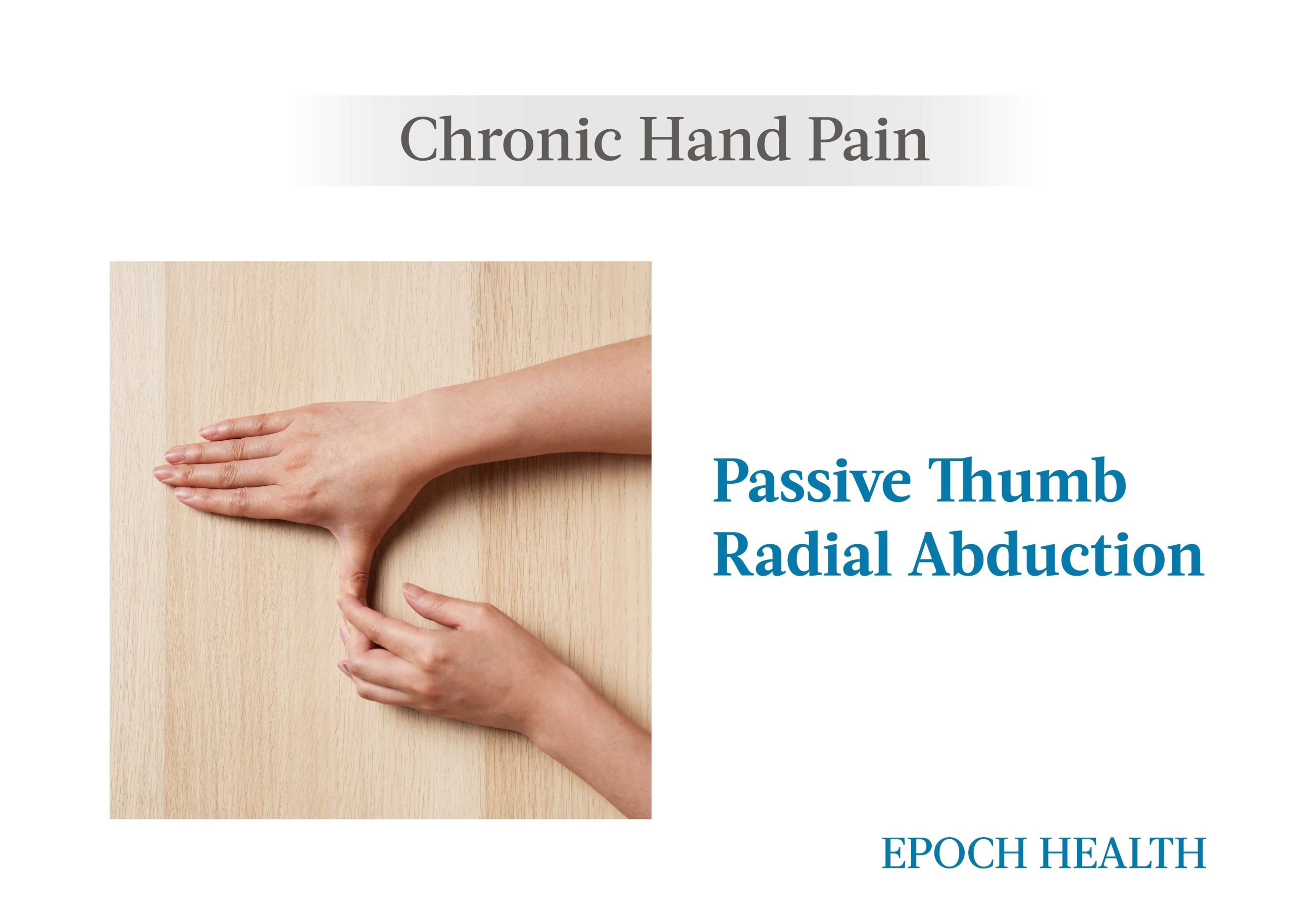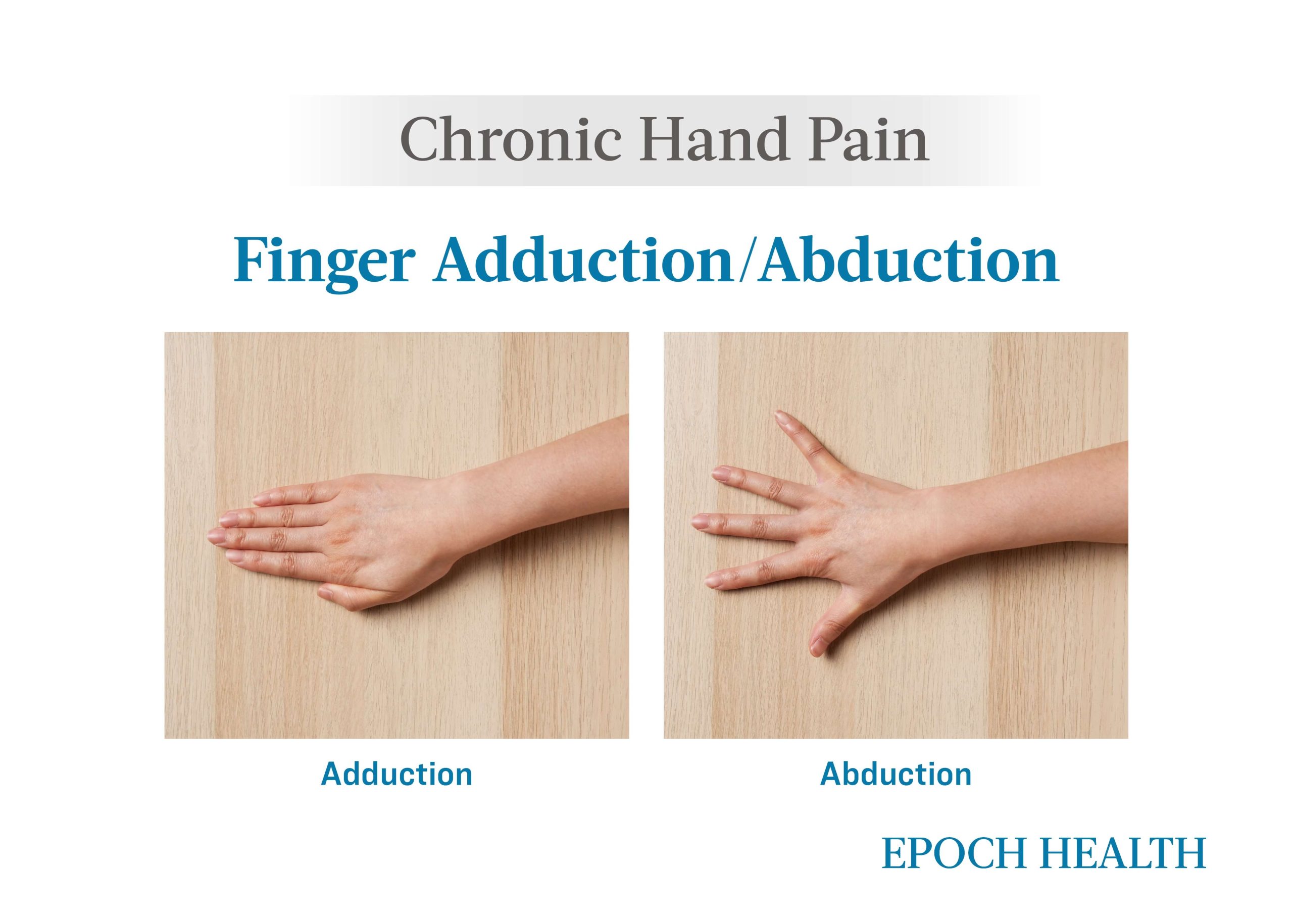
Chronic Hand Pain: Often Caused By Overuse, A Therapist’s Top 6 Exercises For Relief
In this series occupational therapist Kevin Shelley focuses on common issues associated with chronic pain and simple exercises to strengthen weak muscles and enhance joint mobility, with the goal of helping you become pain-free.
By: Kevin Shelley | The Epoch Times
Our hands are incredible tools and carry a heavy load—figuratively and, often, literally.
“Given that the hands are involved in almost every active task, it’s unsurprising that they can suffer from chronic pain. They have a lot of demands placed on them, and sometimes it’s too much,” Rebecca Gold, an occupational therapist with more than 34 years of experience in hand rehabilitation, told The Epoch Times.
Although the hands often suffer from overuse syndromes resulting in chronic pain, they’re also highly responsive to exercise targeted at maximizing their flexibility and strength, which can decrease or completely eliminate pain.
The Bones & Muscles of The Hand
Counting the wrist, the hand contains 27 bones. The wrist has eight small, irregularly shaped carpal bones, which connect to the five long metacarpal bones.
4 Simple Exercises To Eliminate Knee Joint Pain And Help Your Knee Caps Last For 2 More Decades
The fingers themselves are comprised of three bones each: the proximal, or first, phalanges; the intermediate, or middle, phalanges; and the distal, or end joints, also called the fingertips. The thumb is unique among the fingers in that it has only proximal and distal phalanges, and no middle phalange.

The hand utilizes two sets of muscles. The muscles that originate in the forearm and cross the wrist into the hand are known as the extrinsic muscles. These powerful muscles lend strength to the wrist and hand. The muscles that originate in the hand itself—known as the intrinsic muscles—provide both precise dexterity and control of the fingers.
Beyond the muscles, the hand utilizes a complex set of tendons, joints, and ligaments for stability, flexibility, and strength.
Causes of Chronic Pain in Healthy Hands
Chronic pain is pain that generally lasts for more than three months. It can continue at low levels for extended periods, but can also increase slowly and consistently over time.
Your hands are some of the busiest parts of your entire body and can take a lot of abuse, resulting in some common problems.
Functional Patterns
“Overuse is a huge problem with hands; they can be subject to a lot of punishment throughout the day, and this can eventually take a toll,” Ms. Gold said.
Problems with the hands can originate in the hand, but they often start in the wrist and carry over into the hand.
Muscle Weakness
“Unfortunately, muscle weakness is often inconsistent through the hand, and can cause alignment issues and pain,” Ms. Gold said.
The hand uses a combination of larger, stronger muscles and smaller, weaker muscles that need to work together for the hand to function best.
Although we use our hands constantly, the daily tasks we perform in the current era rarely provide adequate mobility and strengthening to the muscles, ligaments, and tendons.
Exercises for Chronic Hand Pain
Performing these commonly recommended exercises can help you maximize the flexibility and strength of your hands.
Intrinsic Plus
This exercise is excellent for working on flexibility and muscular strength of the metacarpal-phalangial (MP) joint, which is the first knuckle of the hand.

Step 1: Begin this exercise with your elbow on a table and your arm and fingers pointing straight up toward the ceiling.
Step 2: Slowly bend your fingers at the first knuckle, while keeping your other knuckles straight. Bend them as far as you can, taking one second to move from straight to fully bent. Push firmly into the endpoint, and hold for three seconds, being careful not to provoke pain.
Step 3: Return your fingers to an upright position with fingers extended straight up.
Step 4: Perform this movement 12 times per set, and do three sets.
Be sure to isolate the bending to the first joint and keep the rest of your finger joints straight. Adhering to strict form makes this exercise highly effective.
Flat Fist
This exercise adds the proximal interphalangeal (PIP), or middle joints, to the tabletop exercise. It takes concentration to perform accurately, but the payoff is increased joint flexibility and muscle strength. The interphalangeal joints and their associated muscles contribute substantially to the strength of the fist.

Step 1: Begin this exercise with your elbow on a table, your arm pointing straight up, and your fingers pointing toward the ceiling.
Step 2: Slowly bend your fingers at the first knuckle, as in the intrinsic plus exercise, while keeping your other knuckles straight. Bend them as far as you can, and hold them firmly against the endpoint of travel.
Step 3: From here, carefully bend the middle knuckles of your hand until your fingers touch the base of your palm. Try to slide your fingers down lower on your palm. Although they won’t move far, you’ll want the tension that this extra movement provides.
Step 4: Hold this position for three seconds before straightening the middle PIP joints back out while keeping the MP joints (first knuckles) in a bent position.
Step 5: Perform this movement 12 times per set, and do three sets.
Be sure to isolate the bending to the PIP and MP joints during this exercise, and keep your fingertips straight. Maintaining strict form will make this exercise highly effective, but it can take practice to master.
Fingerhook
This exercise involves the third set of joints, known as the distal interphalangeal (DIP) joints. It’s excellent for maintaining both the flexor tendons that cross the wrist and the tendons involved with finger flexion and extension.

Step 1: Begin this exercise with your elbow on a table, your arm pointing straight up and your fingers pointing toward the ceiling.
Step 2: Leaving the knuckles extended, slowly bend your fingers at the PIP and DIP joints. Try to touch your fingerprints to the base of your fingers, such that the second and third joints of your fingers are completely bent.
Step 3: Hold this position for three seconds before straightening your fingers back out.
Step 4: Perform this movement 12 times per set, and do three sets.
This exercise can bring a lot of tension into the hand at first, so ease into the exercise. After a few repetitions, the soft tissues involved in the movement should stretch, and the movement will become more comfortable. Be sure to avoid pushing into pain.
Passive Thumb Radial Abduction
Your thumb serves as the opposable finger of the hand, capable of moving toward and touching the other digits on the same hand. While it’s critical for maintaining your hand’s full functional potential, it’s often neglected during exercise. This simple exercise will ensure that your thumb maintains full range of motion.

Step 1: Place your hand palm down on a table with your thumb touching your palm.
Step 2: Without moving your hand, bring your thumb straight out to your side as far as you can.
Step 3: Use the fingers of your other hand to gently stretch the thumb out further. Do not provoke pain in your thumb.
Step 4: Hold the stretch for three seconds before actively moving your thumb back against the other fingers.
Step 5: Take time to move your thumb in either direction, and perform three sets of 12 stretches.
Thumb Composite Flexion
This exercise allows you to strengthen the intrinsic muscles of the thumb and maximize full range of motion.

Step 1: Start this exercise with your palm facing toward you with all of the fingers straight and touching and the thumb straight out to the side.
Step 2: While keeping the fingers together, try to touch the base of your pinky finger with your thumb. If you can’t reach it, move the thumb across your palm as far as you can.
Step 3: Hold your thumb in place for three seconds, then move it back out to the side. Take a second to move in either direction.
Step 4: Try to do 12 repetitions per set and three sets.
To maximize the effectiveness of this exercise, reach hard with the thumb toward the base and the pinky, and maintain the exertion while holding the thumb in position.
Finger Adduction/Abduction
This simple yet effective exercise maximizes the strength of the intrinsic muscles of the fingers. Although it appears simple, using the proper technique will make it far more effective.

Step 1: Place your hand palm down on a flat surface such as a tabletop, fingers together.
Step 2: While keeping your hand down, slowly spread your fingers out as far as you can, taking one second to move through your full range. Push hard at the end of the movement to really work the muscles. Hold for three seconds.
Step 3: Slowly slide your fingers back together, taking time to complete the movement. Squeeze the fingers together as hard as you can, using only the muscles of the hand; hold the squeeze for three seconds.
Step 4: Perform 12 repetitions per set, and do three sets with each hand.
The trick with this exercise is to push into the end movements forcefully. This allows you to effectively work your intrinsic finger muscles.
These exercises can reduce or eliminate chronic pain in your hand, but if you have pain that persists, consult your physician for an accurate diagnosis and referral.
*If you have health or mobility issues that may present problems, consult with your physician before commencing any exercise regimen.
You can read the entire series here.
Views expressed in this article are the opinions of the author and do not necessarily reflect the views of Collective Spark.
* * *
Must Have: I highly recommend this product on Amazon due to its outstanding quality, exceptional performance, and great value for money.
* * *
NEXT UP!
What Happens When You Eat An Avocado A Day?
Sometimes the best things for your health are also the simplest. This is certainly the case with avocados. Eating just one of these tropical fruits, also known as alligator pears, daily may boost your skin and brain health, fight belly fat and more.
Rich in vitamins E and B6, and packed with healthy fats, protein, carotenoids and fibre, enjoying avocados regularly supplies your body with nutrients many people are lacking. So while it can seem daunting to overhaul your lifestyle to get healthier, making small, meaningful changes can have a big impact. Here’s what you can expect if you add an avocado to your daily menu.
4 Benefits of Eating an Avocado A Day
* * *
READ MORE: Turmeric For Chronic Pain
Read more on Physical Therapy: When Back Pain Damages The Spine, And How To Self-Adjust The Lumbar Spine
Liked it? Take a second to support Collective Spark.
We’d love to hear from you! If you have a comment about this article or if you have a tip for a future Collective Spark Story please let us know below in the comment section.
